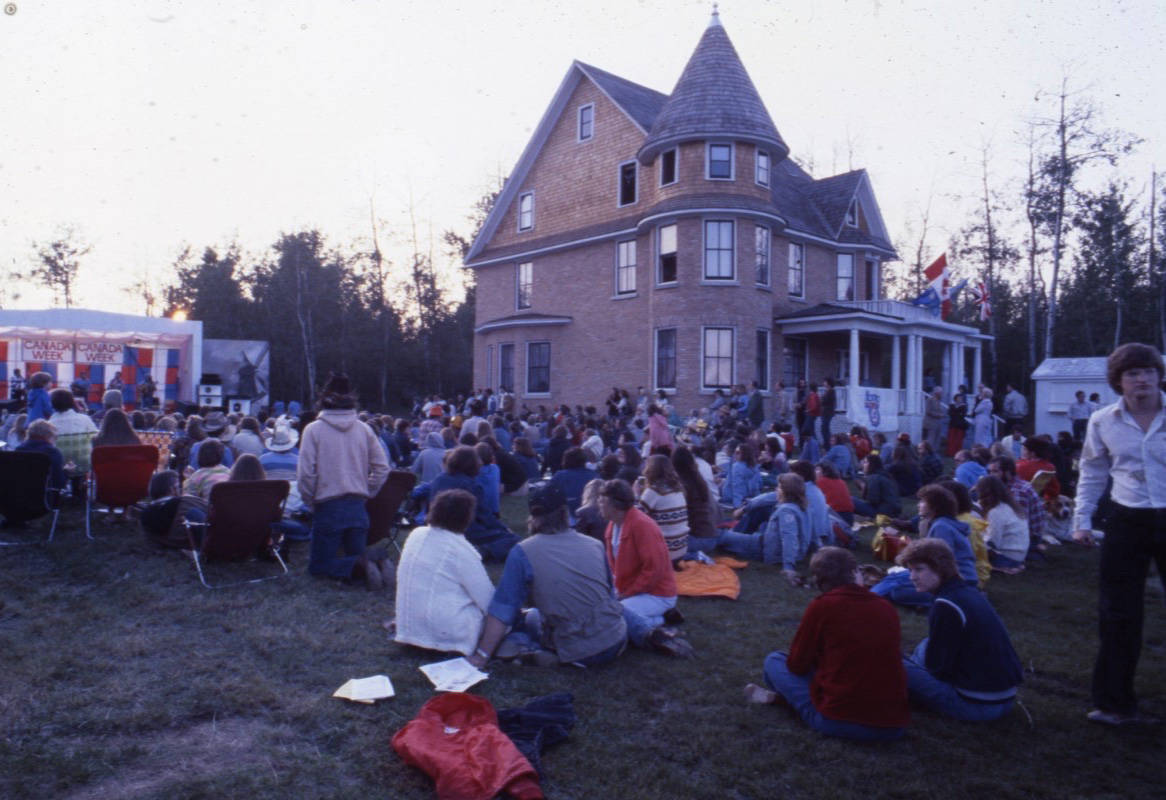By Michael Dawe
Red Deer Express
Special Canada 150 celebrations were held in Red Deer on July 1st at Bower Ponds.
The site is one of the most scenic and popular spots in the community. It is also one of the most historic.
The origins of Bower Ponds go back to the turn of the last century. In 1906, the Great West Lumber Company created a large new sawmill on the northside of the Red Deer River. The flat next to the river was dredged to create a large millpond.
In June 1915, an enormous flood caused significant damage to the millpond. The following year, the Great West Lumber mill closed.
During the 1930s, Caleb ‘Cap’ Card established a small sawmill on the site of the old Great West operation. He created a small dam between the old millpond and the river.
He also installed a water wheel in the sluiceway to power the mill.
The dam, sluiceway and revived millpond became a very popular spot for children, particularly in hot weather.
The Card sawmill closed in 1941 following a fire. The site fell into disuse and the old millpond began to silt in once more. The Village of North Red Deer used the old site as a garbage dump.
Also, starting in 1946, the site became a great source of gravel to help with the rebuilding of Gaetz Avenue (then part of Hwy. 2A) and a new traffic bridge across the river.
In the early 1960s, the west part of the river flat (west of the old millpond) was developed into a major sportsfield and recreation complex. Named Great Chief Park, it officially opened in 1964.
The area farther east remained disused and aesthetically unappealing.
The City even gave serious consideration into turning the old millpond and gravel extraction pits into a new major City nuisance grounds.
People living in North Red Deer and particularly in the new Fairview subdivision vehemently objected. The garbage dump proposal was dropped.
The Red Deer Fish and Game Association then proposed in 1969 that the site be considered for the creation of recreational trout ponds. Progress on the proposal was slow.
However, Hugh Bower helped to speed up plans when he made a very large donation to the project in 1975. The ponds were subsequently named in his honour.
Meanwhile, the Red Deer International Folk Festival Society became interested in the area. Since the staging of the first Folk Festival from June 28th to July 1st, 1969, there had been proposals to create a Folk Festival Village, potentially along Waskasoo Creek next to the old Red Deer Fairgrounds (south of 45 St.)
The Village proposal got bogged down in the heavy debate over the relocation of the Red Deer Exhibition to a new site on the south side of the City.
The Folk Festival Society consequently made a pitch to City council in 1975 to have the Village created east of Great Chief Park and adjacent to the new Bower Ponds.
In 1976, the Society moved the historic Cronquist House from its location in West Park to a new site at Bower Ponds. The house was to become headquarters for the Society and also potentially a part of the Folk Festival Village.
In 1979, a Canada Day picnic was organized at the Cronquist House.
The following year, the entire Folk Festival, now a scaled back, one-day event was moved to this new site.
In the early 1980s, the area was incorporated into Waskasoo Park.
The Folk Festival Village idea was dropped. However, improvements were made to the park including the installation of trails, a stage extending out into the largest of the ponds and the construction of a concession/service building.
Bower Ponds has continued to be the site of the very popular annual Canada Day and Folk Festival festivities. The only year that these events have not been held on the site was in 2005.
High floods had caused a lot of damage at the end of June and there was not enough time to clean up the site before Canada Day.



